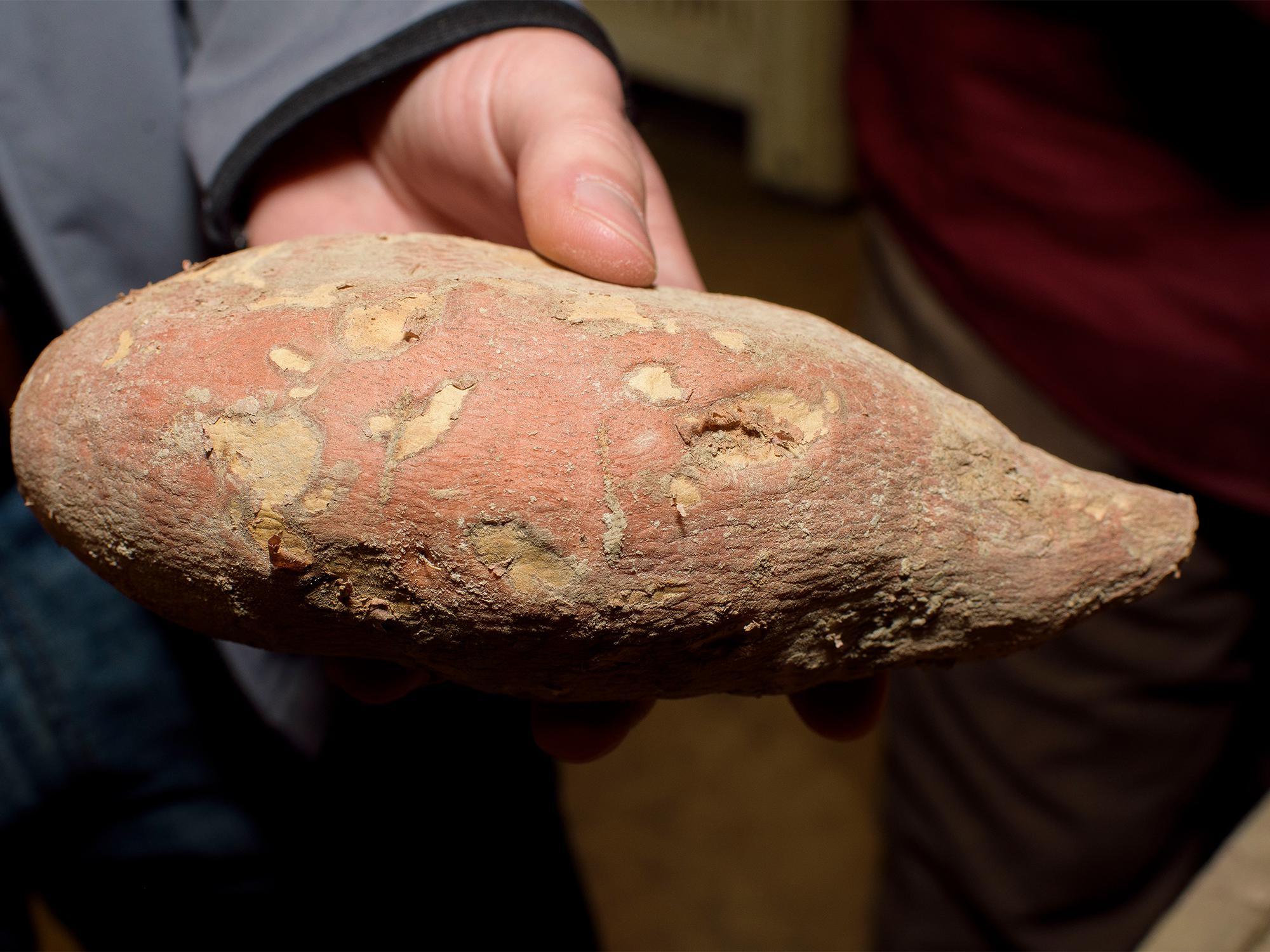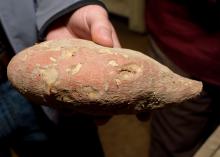Information Possibly Outdated
The information presented on this page was originally released on October 6, 2017. It may not be outdated, but please search our site for more current information. If you plan to quote or reference this information in a publication, please check with the Extension specialist or author before proceeding.
Domestic demand for sweet potatoes stabilizes
STARKVILLE, Miss. -- Mississippi producers are growing 28,100 acres of sweet potatoes this year, but not one of those is below the northern third of the state.
What keeps growers in south Mississippi from planting the increasingly popular crop? Weevils are mostly to blame.
“Sweet potatoes grown in south Mississippi require more inputs to exclude weevils from fields and have stricter regulations as far as how and where sweet potatoes can be shipped and marketed,” said Stephen Meyers, sweet potato specialist with the Mississippi State University Extension Service.
Meyers, who is based at the Pontotoc Ridge-Flatwoods Branch Experiment Station, said history is also at play. About a century ago, families from west Tennessee moved to the Vardaman area and began growing sweet potatoes.
“Many of the producers today can trace their roots back to those original sweet-potato-farming families,” he said. “In addition to sweet potato production in and around Vardaman, a significant amount of acreage was planted in Tallahatchie County, and there are producers in Senatobia, Belzoni and Mound Bayou.”
Those producers have seen market prices fall slightly over the past year as domestic demand has stabilized.
“Consumption is up to 7.6 pounds per person a year. In 2009, the average was 5.3 pounds,” said Extension agricultural economist Alba Collart. “So far in 2017, the terminal market average price for 40-pound cartons of Mississippi nonorganic Beauregard sweet potatoes is $22.67 per carton, compared to $23.19 last year.”
While total acreage is down slightly this year from 28,400 acres in 2016, yields are in good shape. As of Sept. 25, the U.S. Department of Agriculture estimated a third of the crop has been harvested so far, with 47 percent of the crop in fair condition and 39 percent in good condition. Four percent is in excellent condition, and the remaining 10 percent is characterized as poor.
“Harvest began in mid-August for some growers. Others started digging the first or second week of September based upon when their labor arrived,” Meyers said. “The biggest issues we’ve seen this year are rotting sweet potatoes in fields that experienced heavy rainfall in the latter portion of the growing season in August.
“Overall, the quality is fair to good with some excellent and some poor fields in the mix as well,” he added. “The definition of quality has changed over time, and producers have higher expectations than ever for blemish-free, well-shaped and uniform sweet potato storage roots.”
While acreage will likely remain constant in the near future, increasing sweet potato processing regulations could lead to a change in the kinds of sweet potatoes planted.
“If this trend continues, I could envision more acreage being planted to increase the harvest of USDA No. 1 grade sweet potatoes, while letting lesser grades remain in the field,” Meyers said. “One year does not make a trend, so we’ll have to see how this plays out.”
While overall demand has leveled somewhat, growers may find a niche in going organic.
“As consumers become more conscious of health and nutrition, food safety and environmental issues, large produce distributors, food processors and retailers seek producers who can supply increased volumes consistently,” Collart said. “Organic production growth has been led by California and North Carolina, but acreage and interest in commercial organic production is also increasing among sweet potato stakeholders in Mississippi and Louisiana.”




